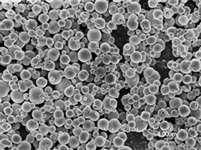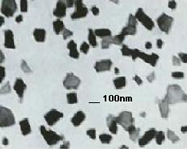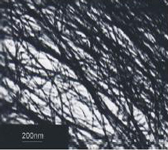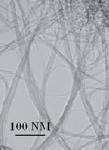|
|
|
1 Identification of substance:
Trade name: Silicon oxide
Stock number: SN3201,SN3202,SN3203,SN3204
Manufacturer/Supplier:
Sun Innovations.Inc.
43241 Osgood RD. Fremont, CA 94539 |
|
2 Composition/Data on components:
Chemical characterization:
Description: (CAS#)
Silicon oxide (CAS# 7631-86-9), 100%
Identification number(s):
EINECS Number: 231-545-4 |
|
3 Hazards identification
Hazard description: Xn Harmful
Information pertaining to particular dangers for man and environment
R 20 Harmful by inhalation.
R 37 Irritating to respiratory system. |
|
4 First aid measures
After inhalation
Supply fresh air. If required, provide artificial respiration. Keep patient warm.
Seek immediate medical advice.
After skin contact
Immediately wash with water and soap and rinse thoroughly.
Seek immediate medical advice.
After eye contact
Rinse opened eye for several minutes under running water. Then consult a doctor.
After swallowing Seek immediate medical advice.
Information for doctor
The following symptoms may occur:
Coughing
Breathing difficulty |
|
5 Fire fighting measures
Suitable extinguishing agents
Product is not flammable. Use fire fighting measures that suit the surrounding fire.
Protective equipment:
Wear self-contained respirator.
Wear fully protective impervious suit. |
|
6 Accidental release measures
Person-related safety precautions:
Wear protective equipment. Keep unprotected persons away.
Ensure adequate ventilation
Measures for environmental protection:
Do not allow material to be released to the environment without proper governmental permits.
Measures for cleaning/collecting:
Dispose contaminated material as waste according to item 13.
Ensure adequate ventilation.
Additional information:
See Section 7 for information on safe handling
See Section 8 for information on personal protection equipment.
See Section 13 for disposal information. |
|
7 Handling and storage
Handling
Information for safe handling:
Keep container tightly sealed.
Store in cool, dry place in tightly closed containers.
Ensure good ventilation at the workplace.
Information about protection against explosions and fires:
The product is not flammable
Storage
Requirements to be met by storerooms and receptacles:
No special requirements.
Information about storage in one common storage facility:
Do not store together with acids.
Store away from halogens.
Store away from oxidizing agents.
Further information about storage conditions:
Protect from humidity and water.
Keep container tightly sealed.
Store in cool, dry conditions in well sealed containers. |
|
8 Exposure controls and personal protection
Additional information about design of technical systems:
Properly operating chemical fume hood designed for hazardous chemicals and having an average face velocity of at least 100 feet per minute.
Components with limit values that require monitoring at the workplace:
Silica, crystalline-quartz
mg/m3
ACGIH TLV 0.1 (respirable particulate)
Belgium TWA 0.1
Denmark TWA 0.1
Finland TWA 0.2
Germany TWA 0.15 (respirable fraction of the aerosol)
Ireland TWA 0.4 (respirable)
Netherlands TWA 0.075 (respirable)
Russia TWA 14
Sweden TWA 0.1
Switzerland TWA 0.15
United Kingdom TWA 0.3 (respirable)
USA PEL 30/%SiO2+2 (total dust)
10/%SiO2+2 (respirable dust)
Silica, crystalline-tridymite and cristobalite mg/m3
ACGIH TLV 0.05 (respirable particulate)
Belgium TWA 0.05
Denmark TWA 0.05
Finland TWA 0.1
France TWA 10
Germany TWA 0.15 (respirable fraction of the aerosol)
Ireland TWA 0.4 (respirable)
Netherlands TWA 0.075 (respirable)
Sweden TWA 0.05
Switzerland TWA 0.15
USA PEL 0.5 (value calculated for quartz-respirable dust)
Silica, crystalline-tripoli
mg/m3
ACGIH TLV 0.1 (of contained respirable quartz)
Belgium TWA 0.1
Germany TWA 0.15 (respirable fraction of the aerosol)
Ireland TWA 0.4 (respirable)
USA PEL See quartz
Silica, amorphous-diatomaceous earth
mg/m3
ACGIH TLV 10 (inhalable particulate)
3 (respirable particulate)
Germany TWA 4 (inhalable fraction of the aerosol)
Ireland TWA 1.5
United Kingdom TWA 1.2 (respirable dust)
USA PEL 20 mppcf
Silica, amorphous
mg/m3
Ireland TWA 3 (respirable); 6 (total inhalable)
United Kingdom TWA 2.4 (respirable); 6 (total inhalable)
Silica, amorphous-fused
mg/m3
ACGIH TLV 0.1 (respirable particulate)
Finland TWA 5
Germany TWA 0.3 (respirable fraction of the aerosol)
Ireland TWA 0.1 (respirable)
United Kingdom TWA 0.3 (respirable dust)
Silica, amorphous-fume
mg/m3
ACGIH TLV 2 (respirable particulate)
Germany TWA 0.3 (respirable fraction of the aerosol)
Silica, amorphous-precipitated and gel
mg/m3
ACGIH TLV 10 (inhalable particulate)
Germany TWA 4 (inhalable fraction of the aerosol)
USA PEL 20 mppcf
Additional information: No data
Personal protective equipment
General protective and hygienic measures
The usual precautionary measures for handling chemicals should be followed.
Keep away from foodstuffs, beverages and feed.
Remove all soiled and contaminated clothing immediately.
Wash hands before breaks and at the end of work.
Breathing equipment:
Use suitable respirator when high concentrations are present.
Protection of hands: Impervious gloves
Eye protection: Safety glasses
Body protection: Protective work clothing. |
|
9 Physical and chemical properties:
Form: Powder
Color: White
Odor: Odorless
Value/Range Unit Method
Change in condition
Melting point/Melting range: 1610-1728 degrees C
Boiling point/Boiling range: 2230 degrees C
Sublimation temperature / start: Not determined
Flash point: Not applicable
Ignition temperature: Not determined
Decomposition temperature: Not determined
Danger of explosion:
Product does not present an explosion hazard.
Explosion limits:
Lower: Not determined
Upper: Not determined
Vapor pressure: Not determined
Density: at 20 degrees C 2.17-2.66 g/cm3
Solubility in / Miscibility with
Water: Insoluble |
|
10 Stability and reactivity
Thermal decomposition / conditions to be avoided:
Decomposition will not occur if used and stored according to specifications.
Materials to be avoided:
Hydrogen fluoride (HF)
Interhalogens
Halogens
Oxidizing agents
Dangerous reactions Reacts violently with interhalogens.
Dangerous products of decomposition:
No dangerous decomposition products known |
|
11 Toxicological information
Acute toxicity:
Primary irritant effect:
on the skin: Irritant to skin and mucous membranes.
on the eye: Irritating effect.
Sensitization: No sensitizing effects known.
Other information (about experimental toxicology):
Tumorigenic effects have been observed on tests with laboratory animals.
Reproductive effects have been observed on tests with laboratory animals.
Carcinogenic effects have been observed on tests with laboratory animals.
Subacute to chronic toxicity:
Prolonged inhalation of silica may cause silicosis, the formation of adhesions in the lungs progressing to the formation of a continuous mass of fibrous tissue. If the disease continues, death may occur. Tuberculosis is often found in people with silicosis. Some forms of silica are more fibrogenic than others. Some forms of crystalline silica have shown carcinogenic, tumorigenic and neoplastic effects in laboratory animals. Amorphous silica is less harmful by inhalation than crystalline forms. Amorphous silica may, however, contain small amounts of crystalline silica.
Additional toxicological information:
To the best of our knowledge the acute and chronic toxicity of this substance is not fully known.
The Registry of Toxic Effects of Chemical Substances (RTECS) contains tumorigenic and/or carcinogenic and/or neoplastic data for components in this product.
IARC-1: Carcinogenic to humans: sufficient evidence of carcinogenicity.
NTP-2: Reasonably anticipated to be a carcinogen: limited evidence from studies in humans or sufficient evidence from studies in experimental animals. |
|
12 Ecological information:
General notes:
Do not allow material to be released to the environment without proper governmental permits. |
|
13 Disposal considerations
Product:
Recommendation
Consult state, local or national regulations for proper disposal.
Uncleaned packagings:
Recommendation:
Disposal must be made according to official regulations. |
|
14 Transport information
Not a hazardous material for transportation.
DOT regulations:
Hazard class: None
Land transport ADR/RID (cross-border)
ADR/RID class: None
Maritime transport IMDG:
IMDG Class: None
Air transport ICAO-TI and IATA-DGR:
ICAO/IATA Class: None
Transport/Additional information:
Not dangerous according to the above specifications. |
|
15 Regulations
Product related hazard informations:
Hazard symbols: Xn Harmful
Risk phrases:
20 Harmful by inhalation.
37 Irritating to respiratory system.
Safety phrases:
9 Keep container in a well-ventilated place.
36 Wear suitable protective clothing.
National regulations
All components of this product are listed in the U.S. Environmental Protection Agency Toxic Substances Control Act Chemical Substance Inventory.
This product contains a chemical known to the state of California to cause cancer or reproductive toxicity.
Information about limitation of use:
For use only by technically qualified individuals. |
|
16 Other information:
Employers should use this information only as a supplement to other information gathered by them, and should make independent judgement of suitability of this information to ensure proper use and protect the health and safety of employees. This information is furnished without warranty, and any use of the product not in conformance with this Material Safety Data Sheet, or in combination with any other product or process, is the responsibility of the user.
|
|
|














